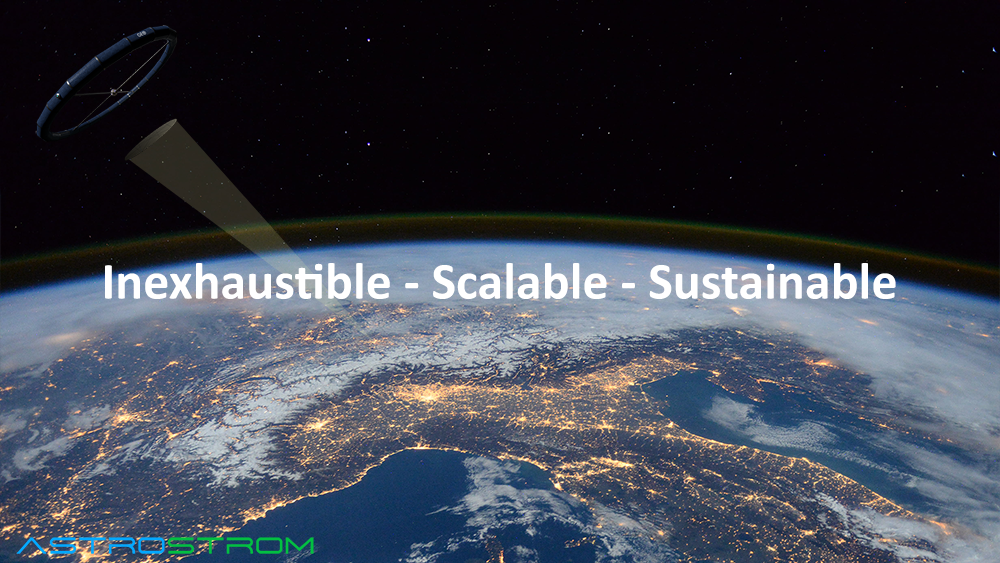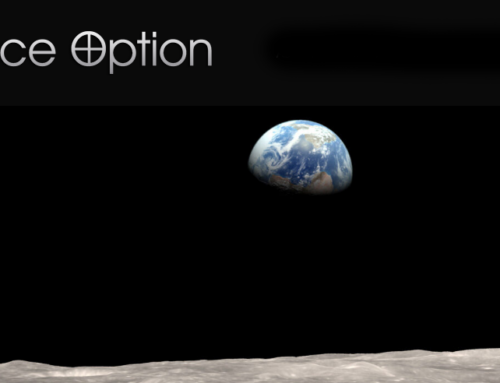Last year, Astrostrom GmbH analyzed Switzerland’s energy situation based on the “Energy Perspectives 2050+” strategy and identified an Energy Dilemma that will lead to an annual energy deficit of 114 TWh by 2050 – equivalent to 15 nuclear power plants the size of Gösgen. As the Sun doesn’t always shine and the wind doesn’t always blow, terrestrial energy technologies – solar, wind and hydroelectric – while necessary, cannot be adequately scaled to meet Switzerland’s 2050 energy and climate goals.
Sufficient and reliable electrical power is needed to maintain industrial productivity, the Swiss standard of living and to achieve energy independence. Inexhaustible clean energy from space – would be the ultimate green energy option for Switzerland, Europe, and the world. Switzerland has the need, the know-how and the financial means to take a leading role in its development.
Supplying solar energy from space is no longer in the realm of science fiction. The concept has been studied for more than fifty years and it has never been more feasible or more relevant than today. The basic concept consists of an exceptionally large satellite with photovoltaics in Earth orbit which would capture solar energy and convert it into electrical power and use wireless power transmission (WPT) to send this energy to a ground station on Earth via a microwave where it would be captured by a large receiving or rectifying antenna called a rectenna. This rectenna converts the energy into AC electrical current that is then fed into the existing electrical grid. Solar photovoltaics installed in space are not affected by the atmosphere, clouds, water, dust, snow, or sand as are PVs installed on Earth. Furthermore, they are illuminated by the Sun in Geostationary Earth orbit (GEO) 99.94% of the time – 8,755 hours/year.
On December 9 and 10 last year, the European Space Agency (ESA) hosted an international online workshop: “Space-based Solar Power for Net Zero”. For two days, top experts in the field presented their latest ideas and insights on how to transmit power from space to Earth via microwaves. During the workshop, ESA announced 13 projects that were selected and funded from the 85 submissions in their open call for ideas “Clean Energy – New Ideas for Solar Power from Space”. Of these, 3 ideas from Switzerland including Astrostrom’s.
The cost of launching satellites has been reduced by 90% in the past decade by companies such as SpaceX. Additionally, space hardware costs have also declined significantly while becoming ever more sophisticated and capable.
However, in addition to the costs, a major obstacle to realizing clean energy from space remains the logistical challenge of launching thousands of rockets from the surface of Earth to deploy huge power satellites that are several kilometers in diameter. According to Astrostrom: “One solution to the logistics problem is to manufacture most of the solar power satellites components on the Moon from lunar materials and assemble them in orbit as this as this would greatly reduce the number of launches, as well as reducing costs.”
Astrostrom GmbH was awarded a contract from the European Space Agency to study setting up a manufacturing facility on the Moon for producing clean energy in space. The Astrostrom study team includes space engineers, economists, architects and artists and the study will last one year. If Astrostrom’s “Greater Earth Lunar Power Station” is shown to be feasible, this concept could be scaled to provide inexhaustible clean energy to Earth.
Astrostrom has recently produced two new videos – “Arrival” and “First Steps” – showing how it plans to land its first human mission on the Moon – the first steps in setting up a manufacturing facility on the Moon for producing clean energy for the Moon and Earth.







